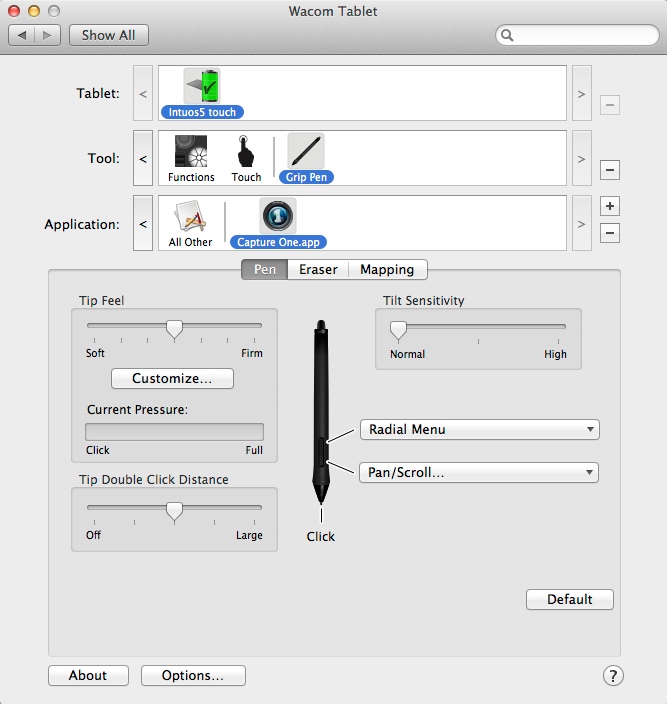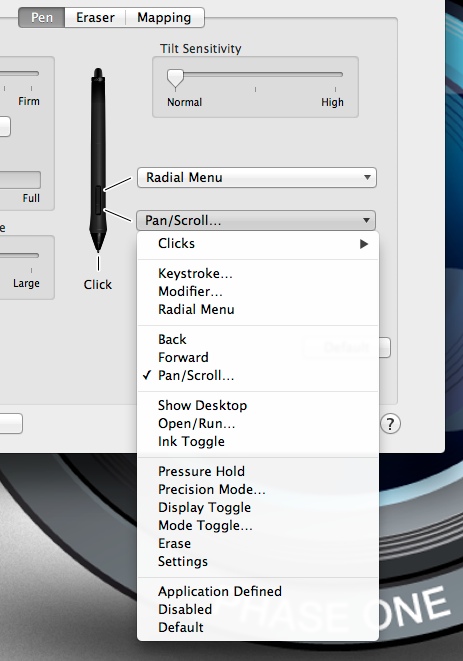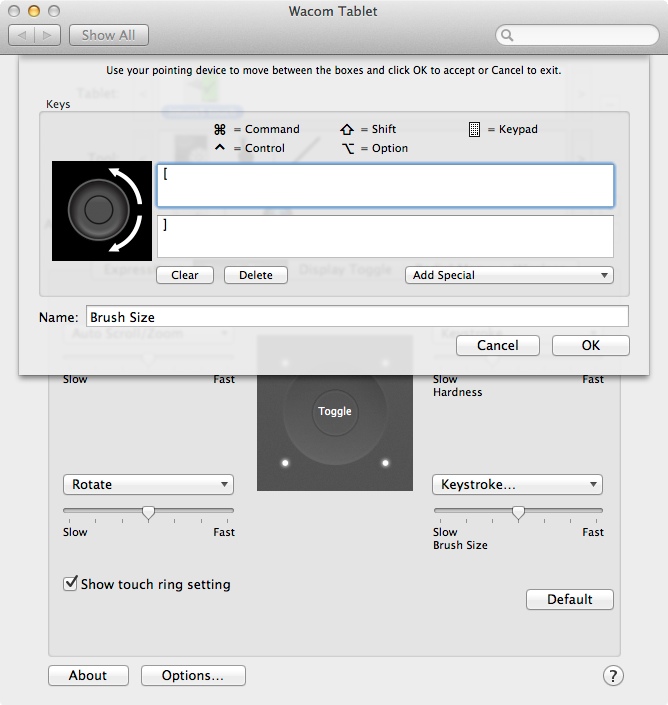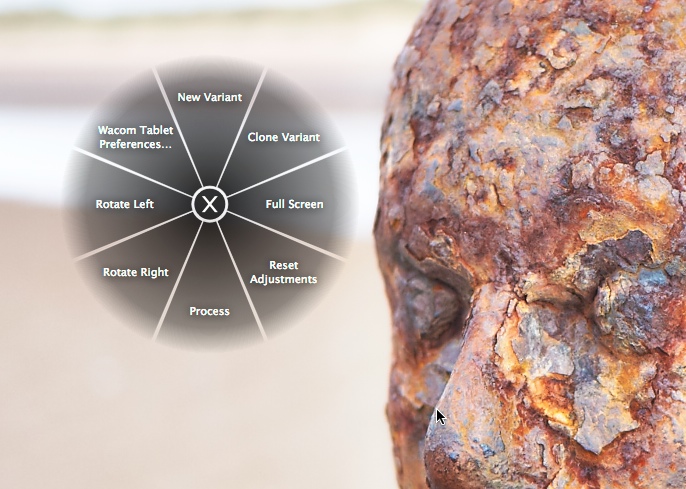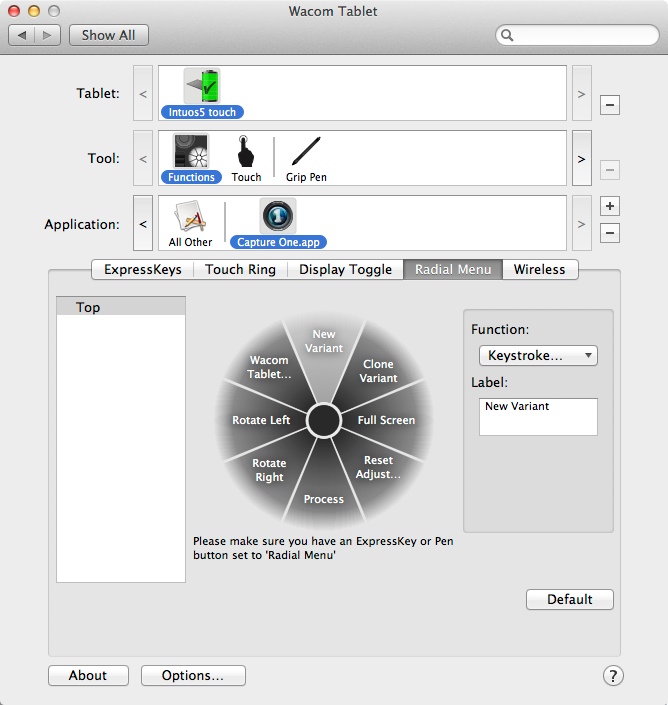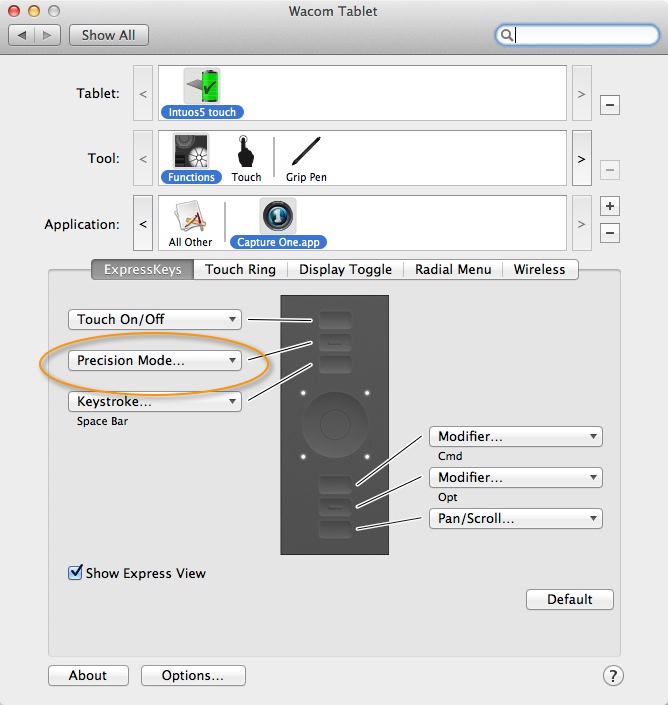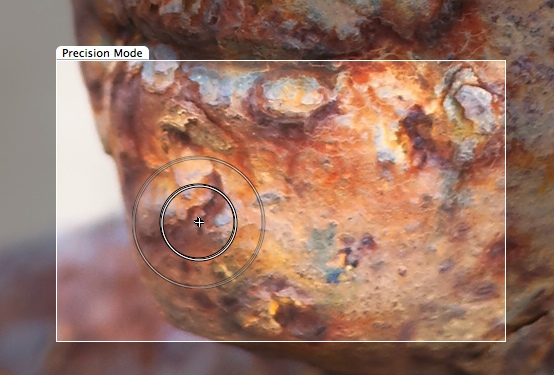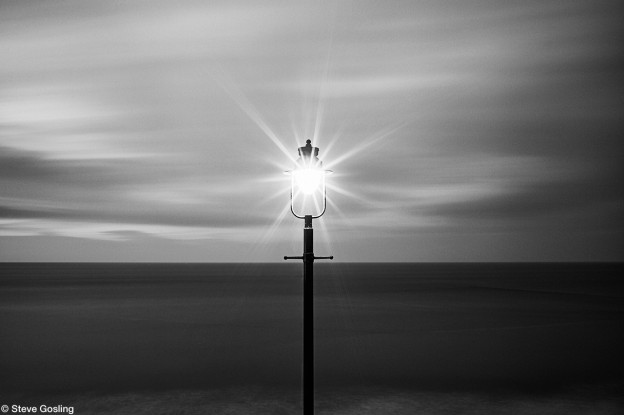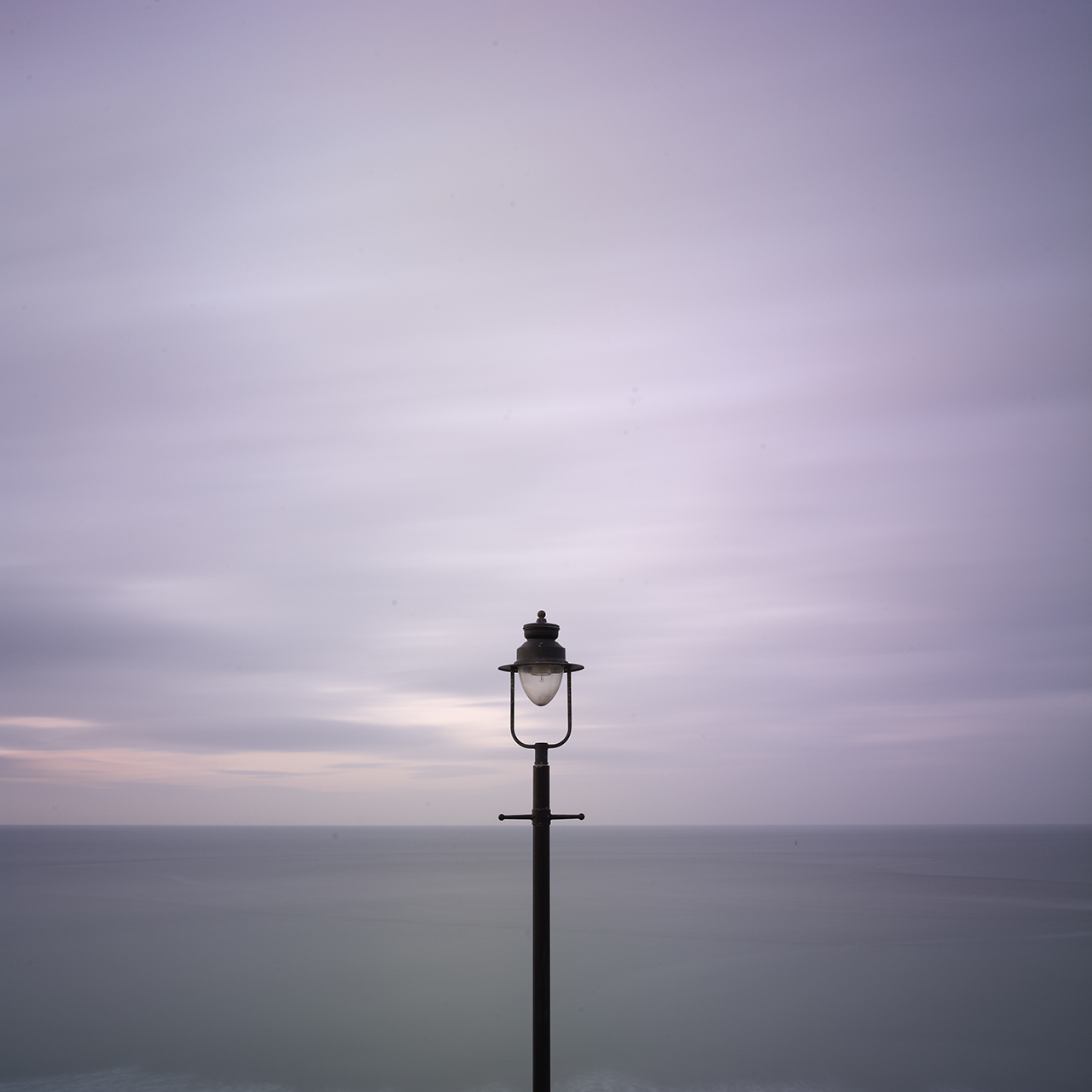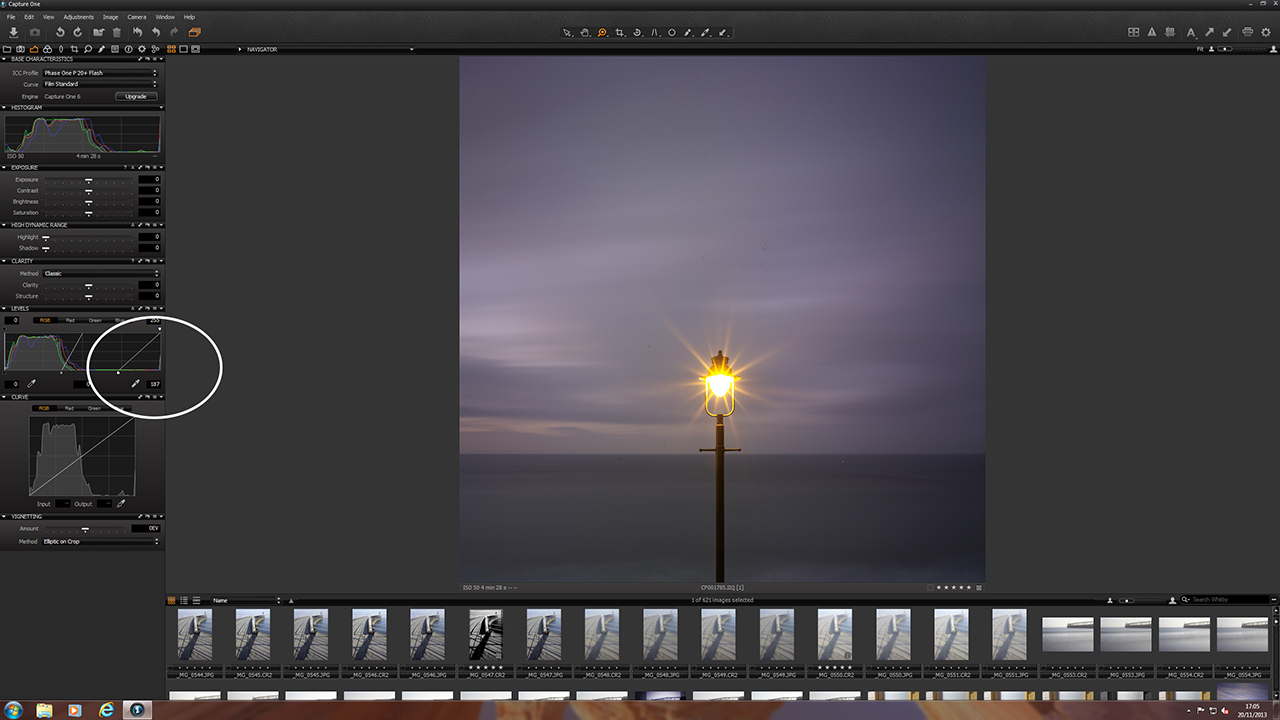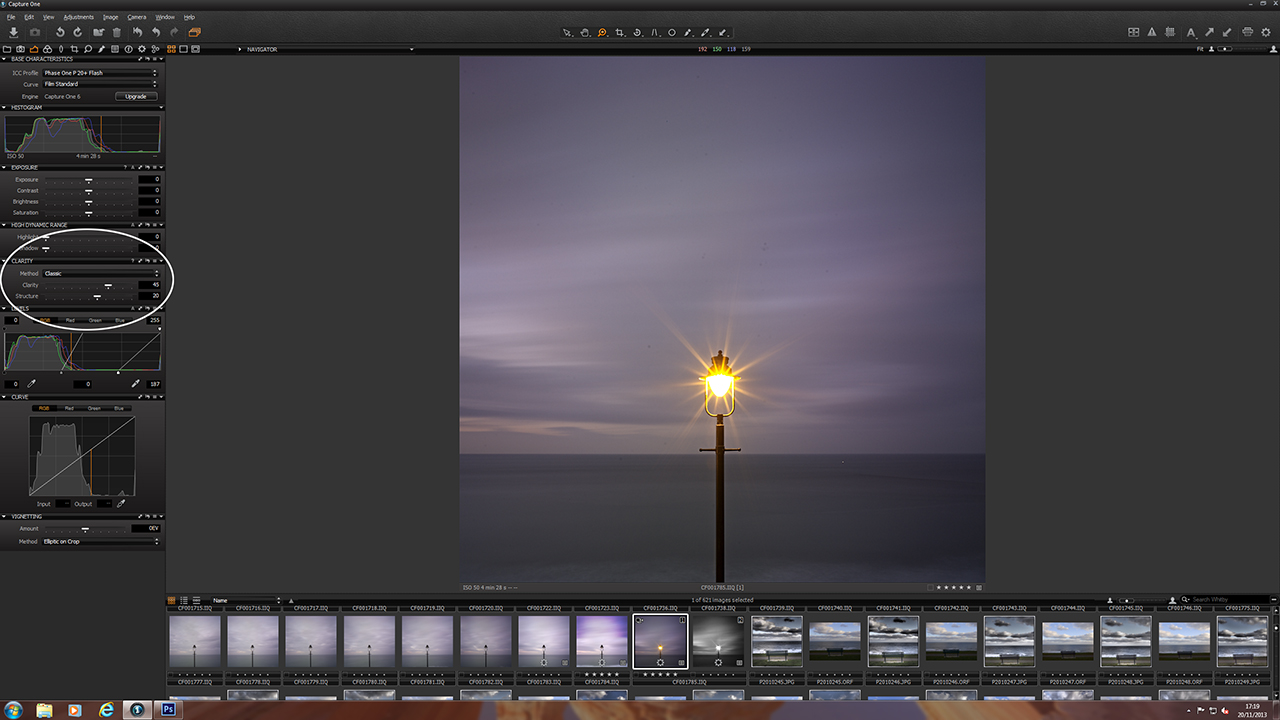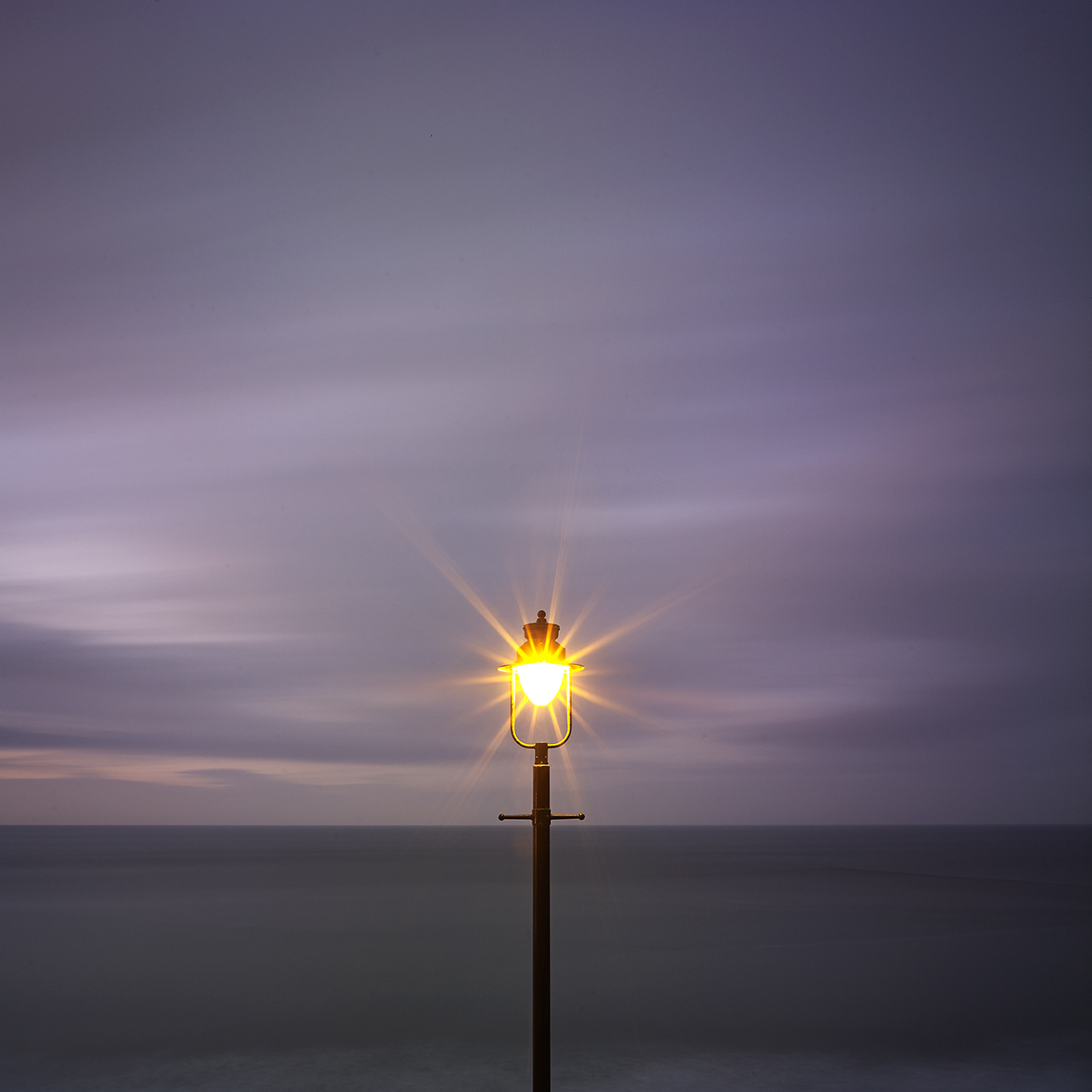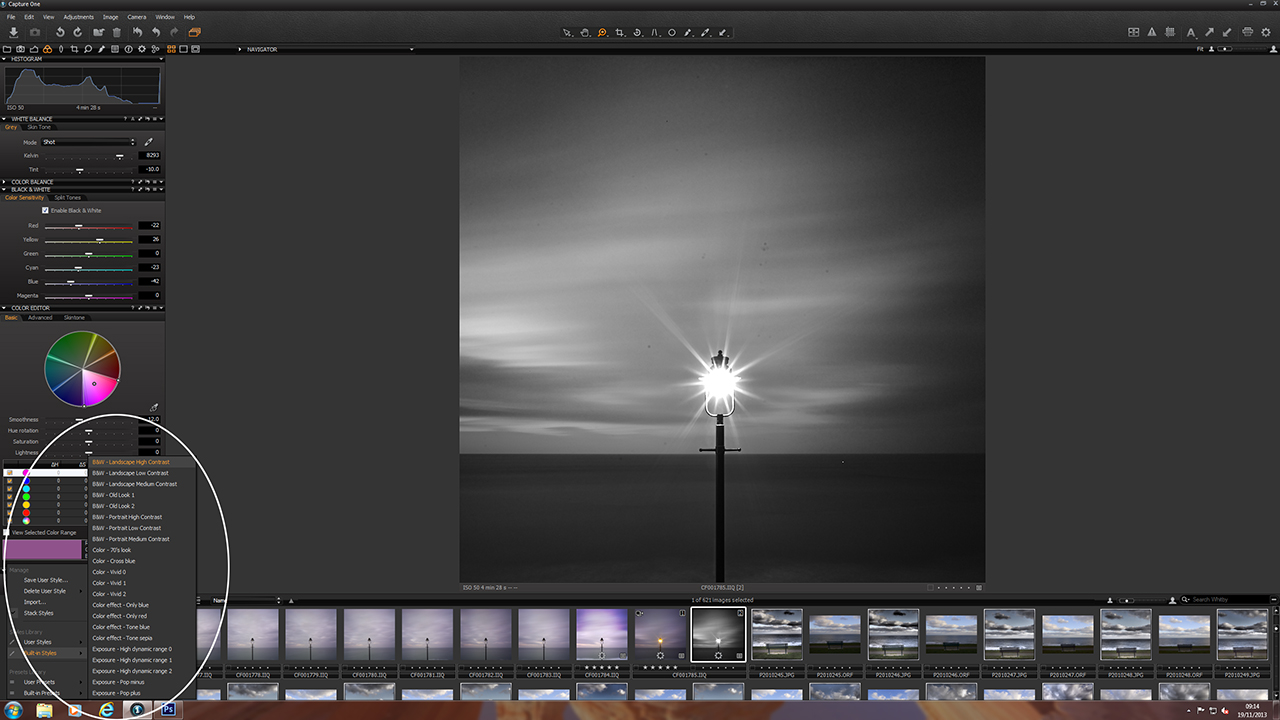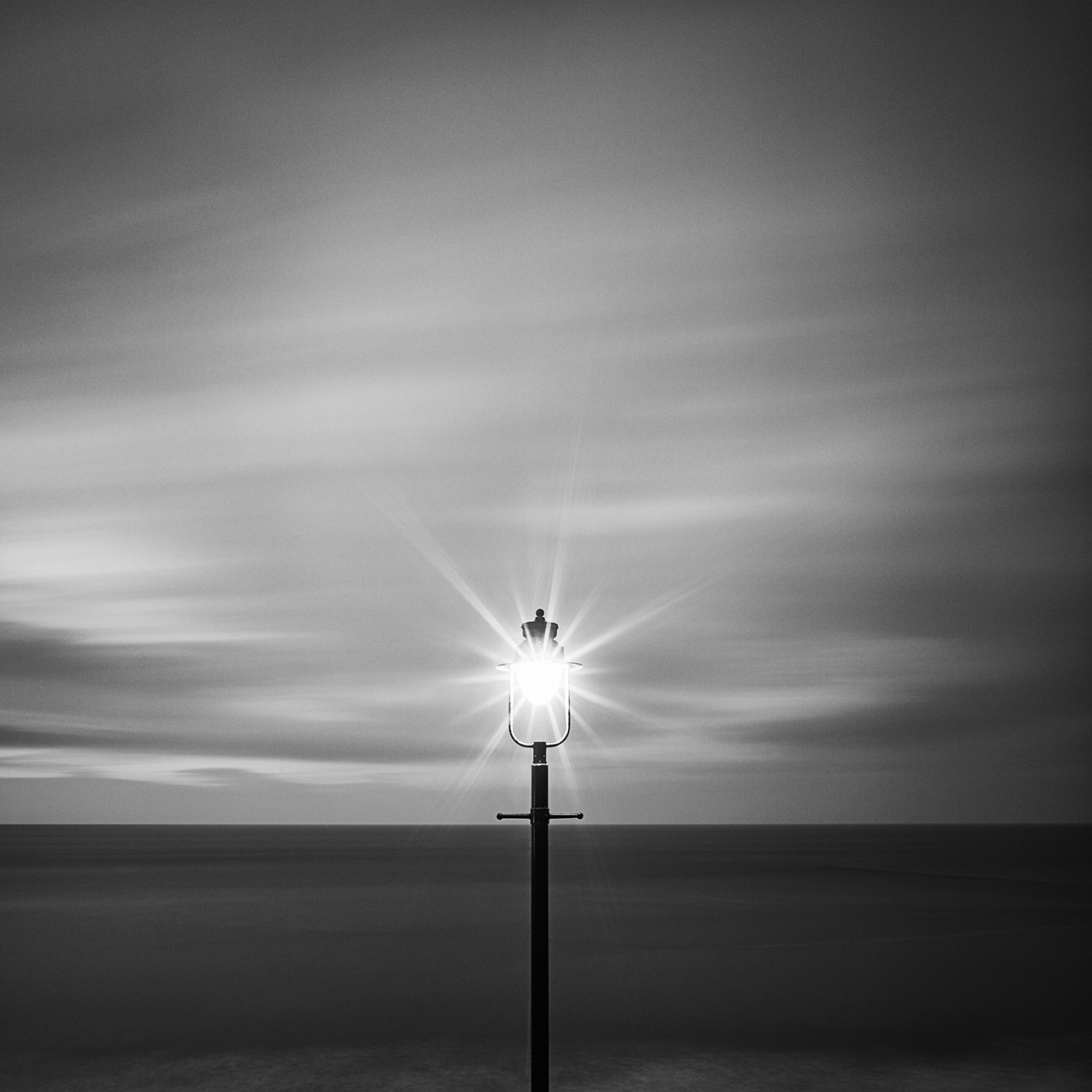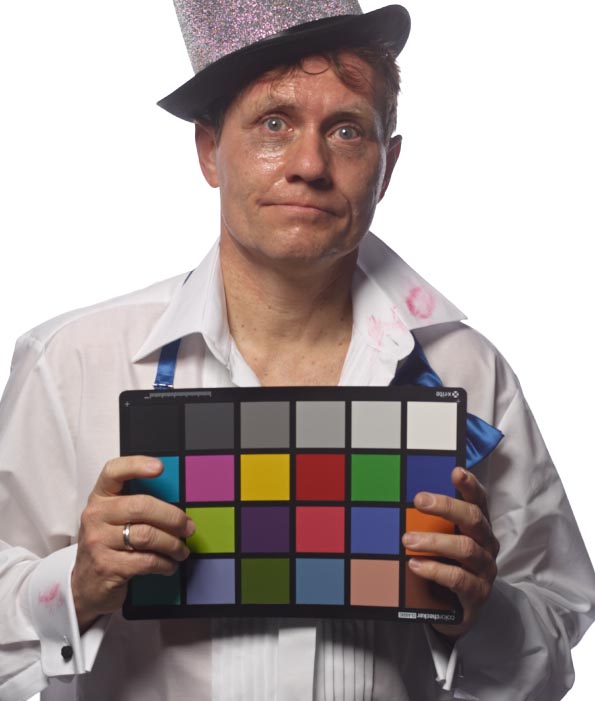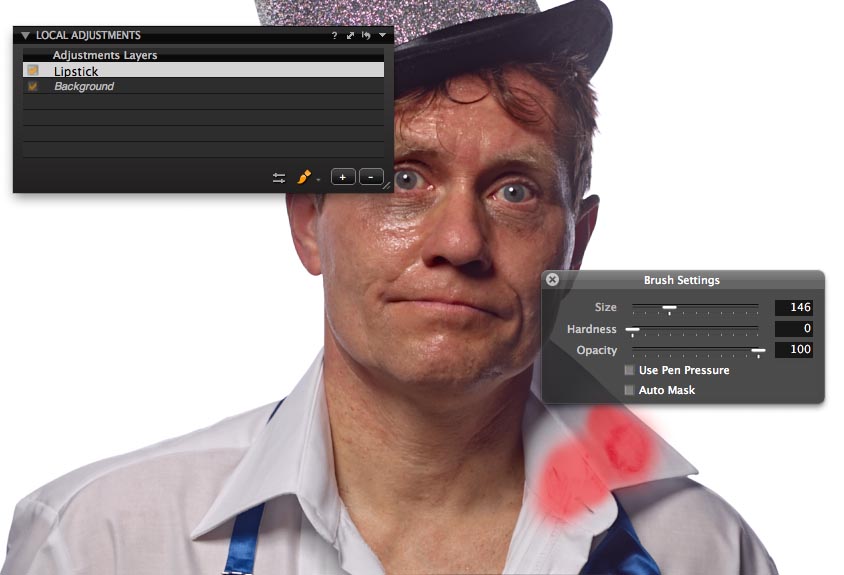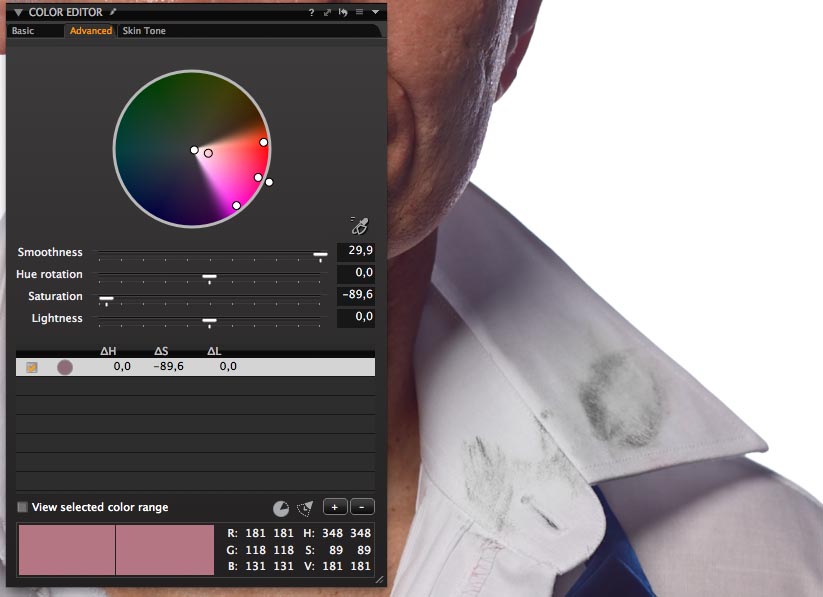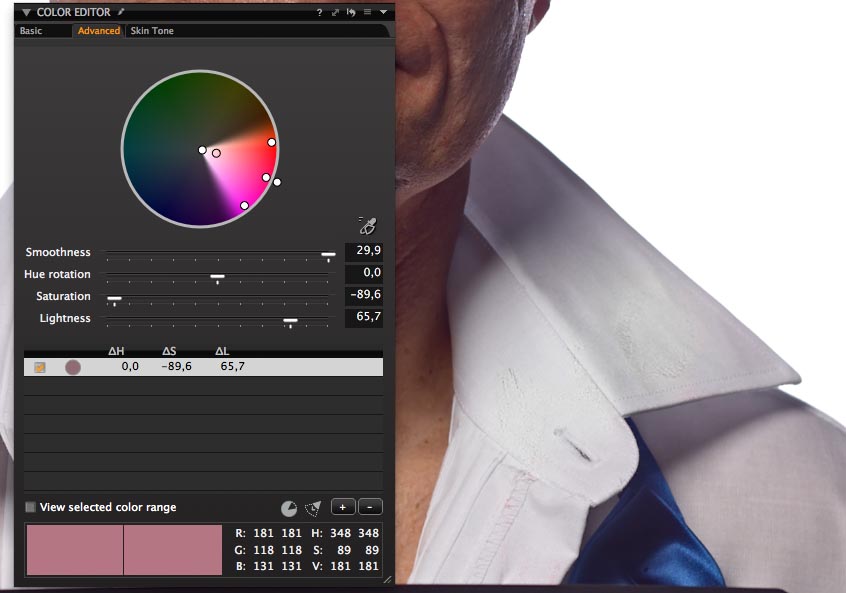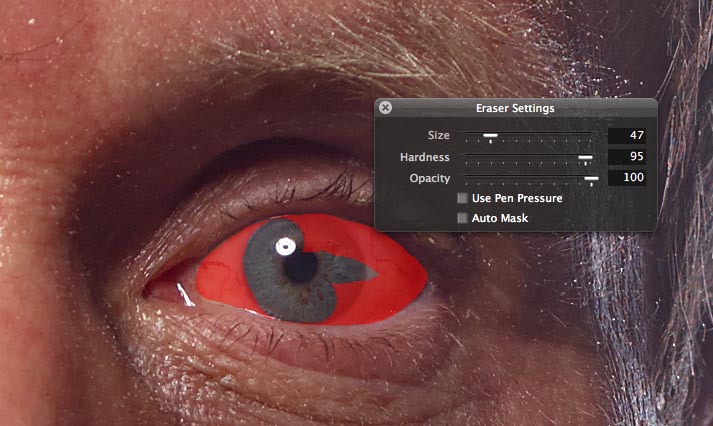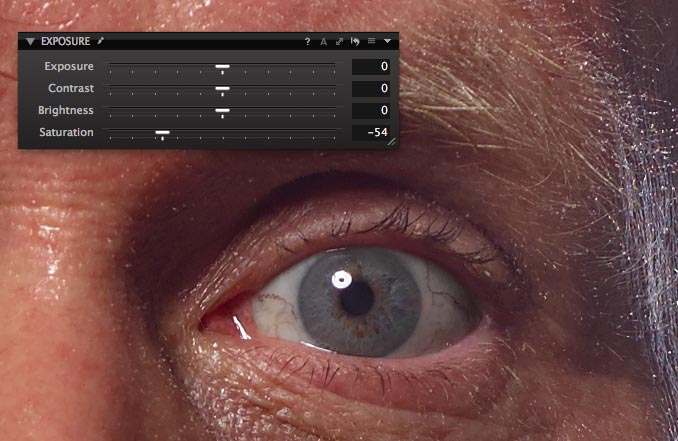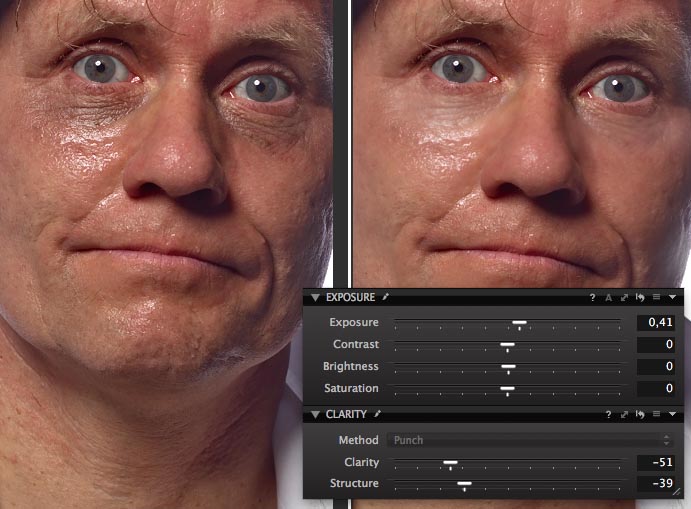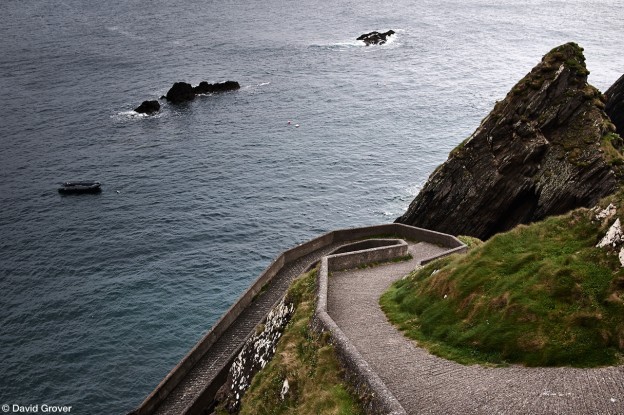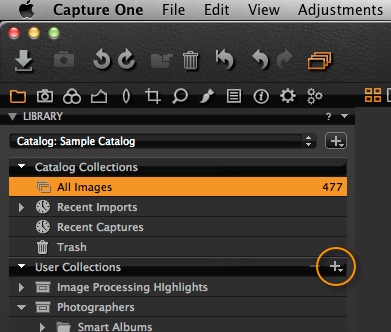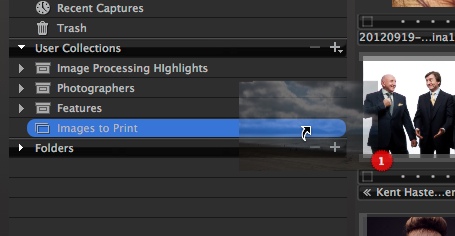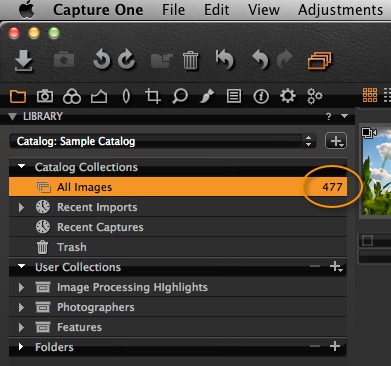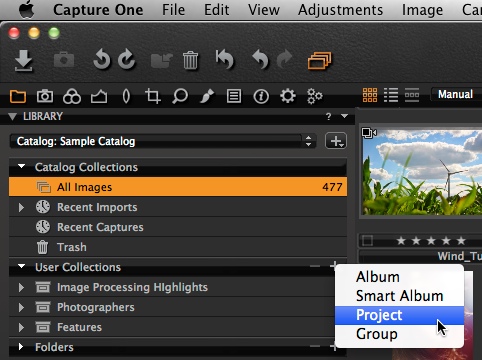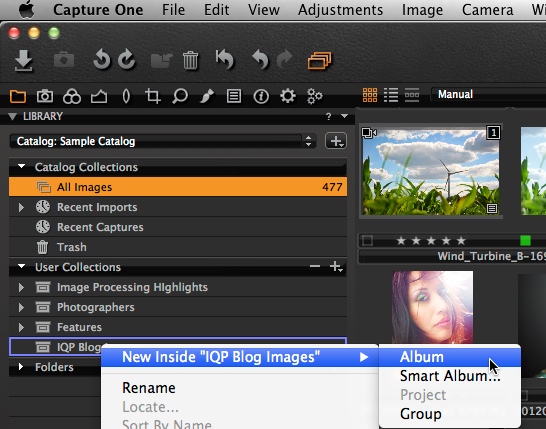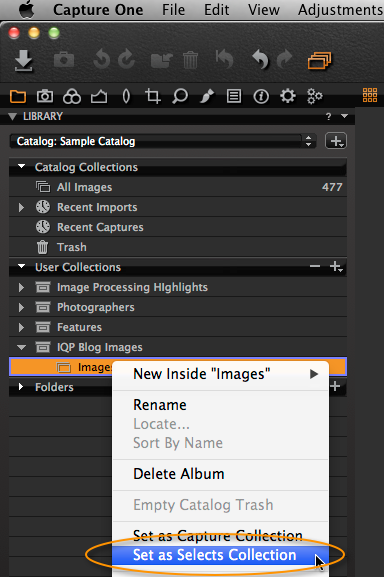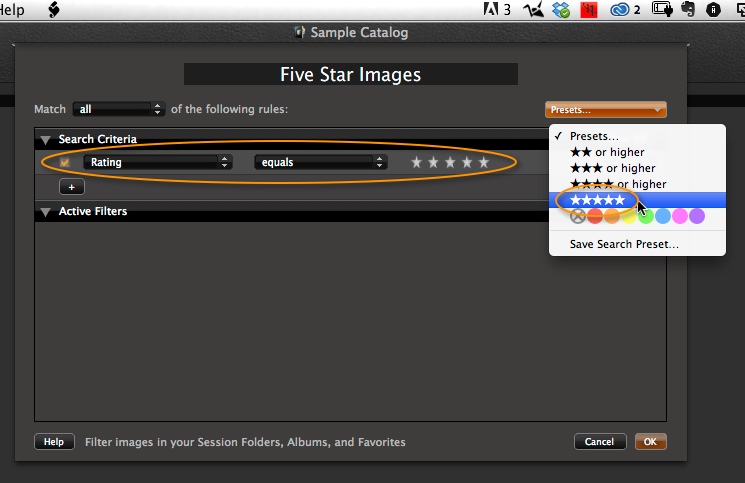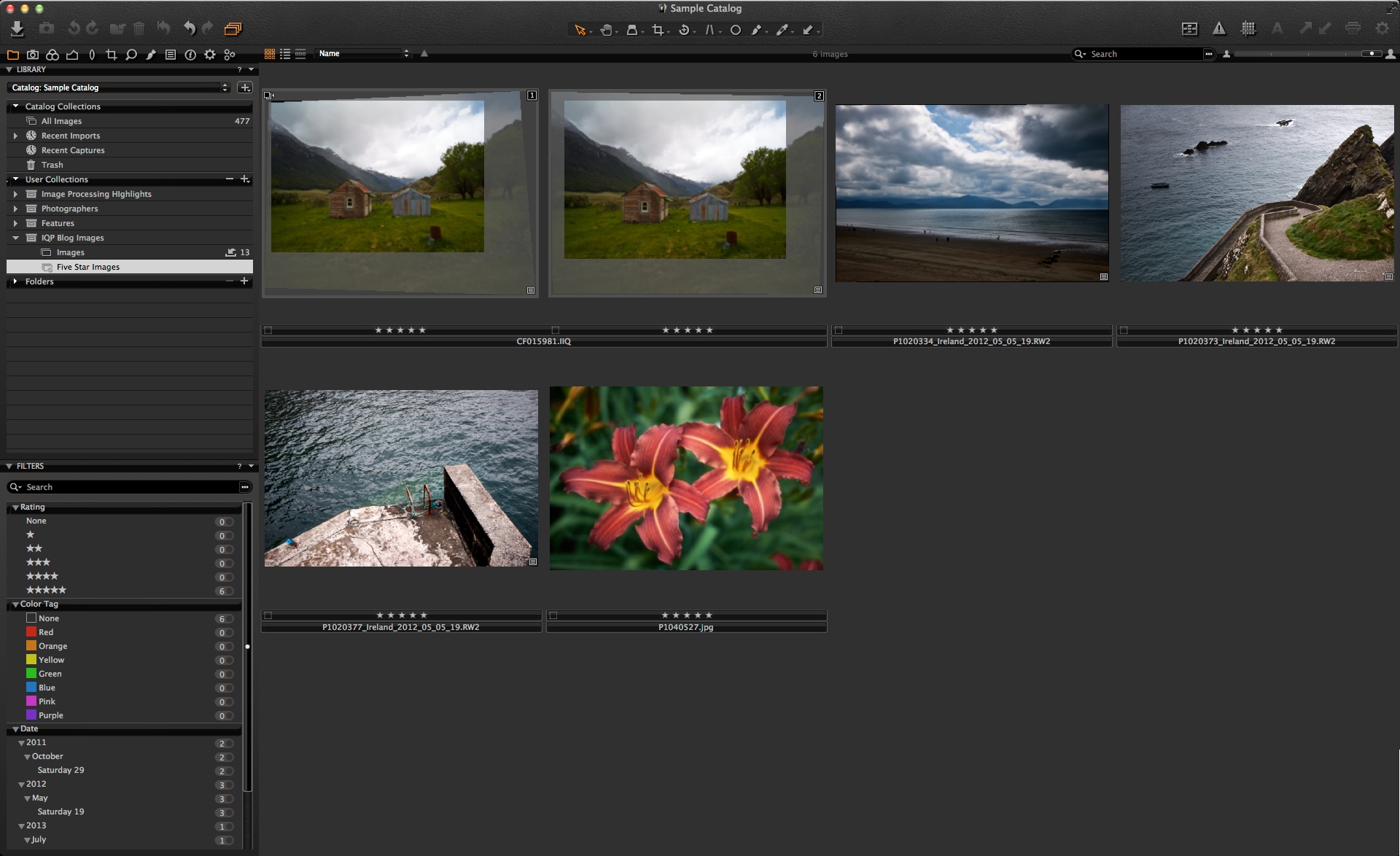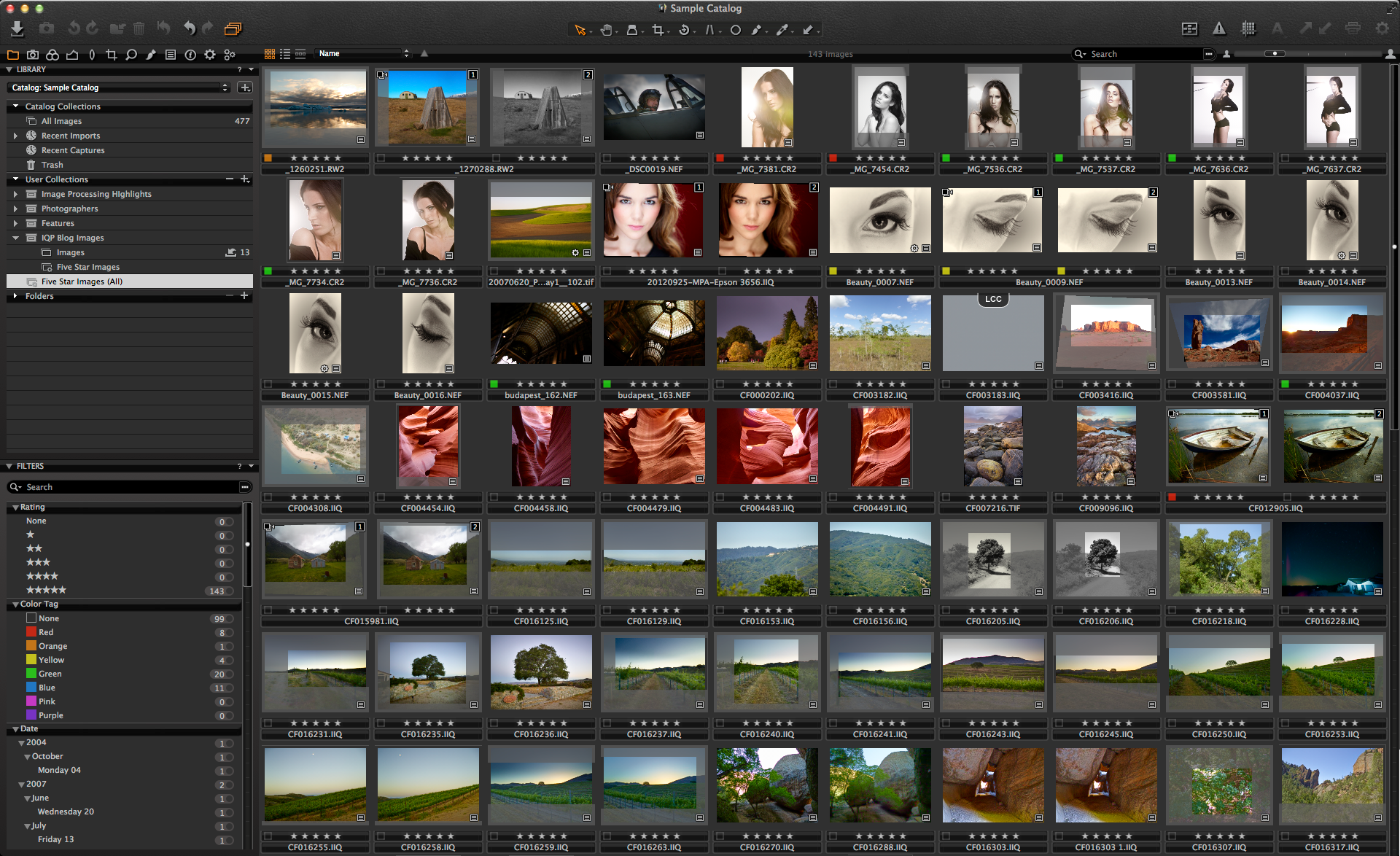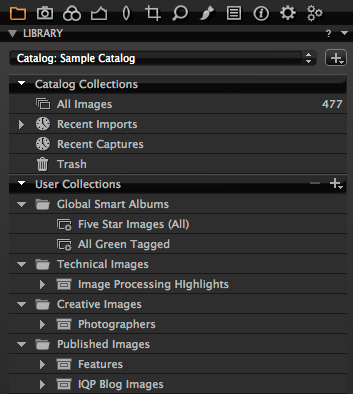NOTE: This article discusses an outdated version of Capture One. To learn more about our latest version, click here.
I personally began using a Wacom tablet to work with Photoshop some time ago. It was more out of necessity as I found it simply too uncomfortable to use a mouse for long periods of time while retouching images.
Never looked back
It took me a couple of days to get used to it, but since then I have never looked back.
More recently I have begun to explore the Wacom preferences and added in some customization of the pen and the tablet, adding additional shortcuts I can use in Capture One Pro 7.
Customize more and work faster
Capture One Pro 7 already supports pressure sensitivity linked to the size of the Local Adjustment brush, but there is so much more you can do to leverage the various options in the Wacom preferences to use other features in the software.
I have found this is an additional way to work faster, as well as using keyboard shortcuts.
The following blog post was written based on using a Wacom Intuos 5 touch, which is similar to the more recent Intuos ‘Pro’ series.
Why use a Wacom Tablet?
I mentioned in the introduction that I moved from using a mouse for comfort reasons. In fact, even for non-imaging applications I still stick with the pen and tablet. I find it faster and easier to use.
If you haven’t tried out a graphics tablet before, then in my opinion it is certainly worth a trial. They consist of a touch and pressure sensitive tablet and a pen. The tablets are available in a variety of sizes with varying functionality, for example how many levels of sensitivity they may offer. You can read more about the Intuos here
Customizing
All functionality of the pen and tablet is changed in system preferences (In this case on the Mac). Here, for example, we are looking at the various options available for the pen:
What I like about the customization options is that they can be application specific.
Note, in the ‘Application’ heading I have added Capture One Pro 7 as an application and all changes to the pen and tablet options will only be made for Capture One. I could continue to add other applications here. Applications that are not shown will use the options in the ‘All Other’ tab.
The tablet has a number of programmable shortcut keys, known as Express keys, while the pen has a two way rocker switch and also an ‘eraser’ on the end – more on that later!
The Pen
I only make a couple of changes to the Pen, namely on the rocker switch. I have this set to enter the ‘Radial Menu’ (more on that later) and to be able to Pan and Scroll.
Pan/Scroll means that when I hold the button down, and subsequently drag with the pen, I can scroll through the thumbnails, for example, and any other scroll action, like moving up and down a web page.
If this does not fit with your personal preference then you can see from the screen grab below, that there are a multitude of options available!
That’s indeed one of the strengths of the Wacom system. Pretty much any input option on the pen or tablet can be set to do a huge variety of actions.
The Tablet
The mind also boggles here with the number of customizable options you can make, but I limit myself to a few changes.
The tablet has a number of Express keys on the side of the tablet. These again can be set to do various different options and keystrokes. I don’t make extensive use of these as I always have my wireless keyboard close by. I do however use the Touch Ring and Radial Menu.
The Touch Ring
The Touch Ring is a touch sensitive scroll wheel that I mostly use for changing the size of the Local Adjustment brush. There is a keyboard shortcut in Capture One Pro 7, that also changes the size of the brush. This is [ and ] – The square brackets.
Therefore it is an easy task in the Touch Ring menu to add this keystroke to one of the Touch Ring options. You can have four different actions of the touch ring, by pressing the centre button to move between each one. Here is the setup page for adding the square bracket keystroke.
Now it is easy when I am working with Local Adjustments to keep one hand on the pen and my other hand on the Touch Ring to quickly alter brush size as I work around an image. The good news is that brush hardness can also be controlled by the shortcut Shift-] so to avoid having to enter the Local Adjustment brush dialog box, I can also use the Touch Ring to change hardness, by setting the Keystroke in a similar way.
See how fast it is to move round an image in this short video clip below. What I wanted to do for the title image was to lighten the background compared to the sculpture. I figured the easiest way to do this would be to mask the sculpture itself and then invert the mask.
Also in this clip, I choose to ‘clean’ up the mask using the erase brush. You can actually flip the Wacom pen upside down to automatically choose the eraser, but I actually find it faster to simply hit ‘e’ on the keyboard to select that option and then ‘b’ to return to brush.
http://youtu.be/EFk3mSR4kj8
If you would prefer to link brush size to pressure, then turn on the option in the Brush Settings dialog box. Access it by right-clicking while the brush tool is selected.
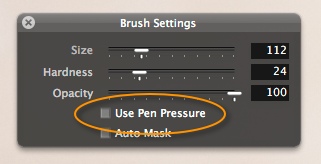
The Radial Menu
The Radial Menu brings up a floating circle of customizable options when you hit either one of the Express keys, or in my personal case, the top part of the rocker switch on the pen. It looks like this.
I have customized each segment with a useful command in Capture One Pro 7. For example creating variants, as you can see in the top and adjacent segment.
So to create a new variant, I click the rocker pen switch once, and then click on the segment itself. Each segment can be changed here.
I haven’t fully decided if this is faster than keyboard shortcuts or menu selections (one thing I find with a pen and tablet is that I can move much faster around my monitor area compared to a mouse), but it does give me another option.
One final mode that I have discovered recently is Precision Mode. If I want to draw more complex masks, it can often be a help.
I have set one of the Express Keys on the side of the tablet to activate this mode.
Initiating Precision Mode concentrates the area of the tablet into one section of the screen.
Therefore you can be extremely precise for mask drawing. You can adjust the size of the precision area too.
I hope you have found the above suggestions useful. I am sure there is more I could do to leverage the tablet even more, so I would be interested to hear if any of you have come up with some interesting ways to work with tablets and Capture One Pro 7.
Best regards,
David

